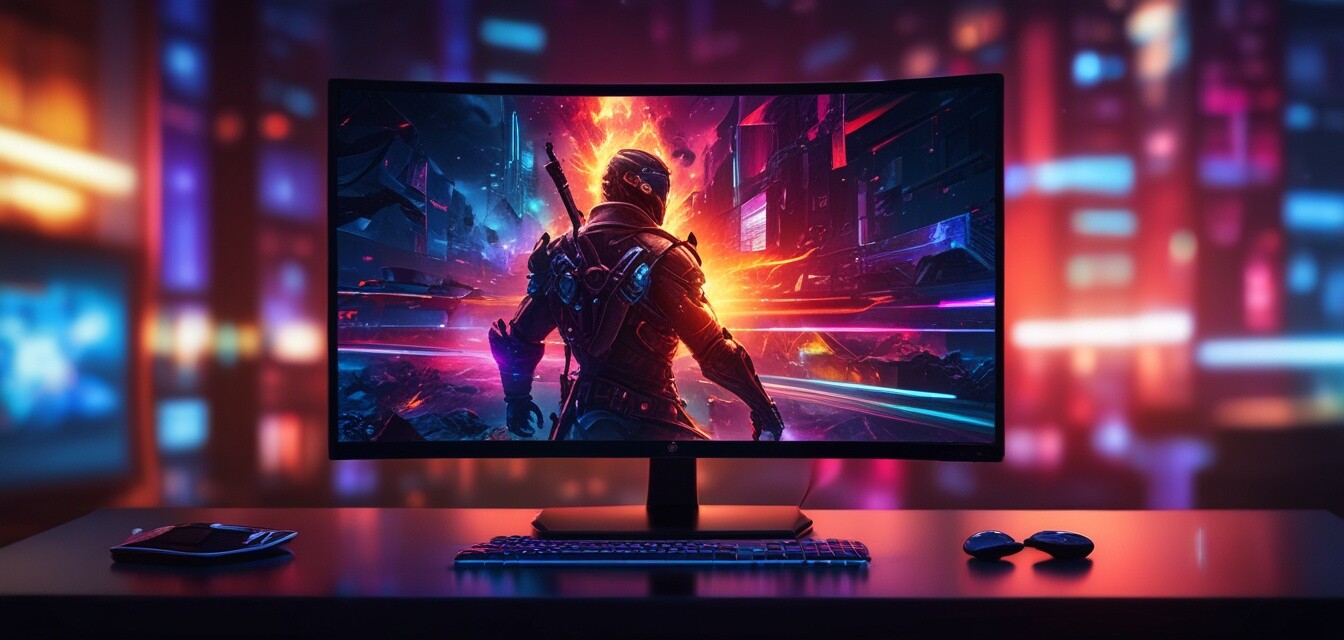
How to Configure Your OLED Monitor for Game Performance
Key Takeaways
- Understanding refresh rates is crucial for smooth gameplay.
- Properly adjusting brightness and contrast can enhance visual quality.
- Consider gaming modes available in your OLED monitor settings.
- Use variable refresh rate technologies for optimized performance.
- Regularly calibrate your monitor for the best visual experience.
Configuring your OLED monitor for optimal game performance can significantly boost your gaming experience. Whether you're a casual gamer or an avid competitive player, understanding the key settings can take your gameplay to the next level. This guide will walk you through practical tips to adjust essential settings, including refresh rates, brightness, contrast, and more.
Why OLED Monitors Matter in Gaming
OLED monitors are known for their astounding color accuracy and contrast ratio. The ability to display true blacks and vibrancy enhances immersion in games. Let’s explore how to set up your OLED monitor effectively.
Understanding Refresh Rates
Refresh rates refer to the number of times your monitor updates with new information every second, measured in Hertz (Hz). Higher refresh rates result in smoother visual experiences. Below is a comparison of common refresh rates you might consider:
| Refresh Rate | Benefits | Recommended For |
|---|---|---|
| 60 Hz | Sufficient for casual gaming and regular media consumption. | Casual gamers and standard applications. |
| 120 Hz | Improved smoothness and response time. | Competitive gaming or fast-action games. |
| 144 Hz | Top-notch performance with minimal motion blur. | Professional gamers seeking a competitive edge. |
| 240 Hz | Extreme smoothness for professional esports gaming. | Serious competitors looking for the highest performance. |
Adjusting Your Monitor Settings
To get optimal performance, consider the following adjustments:
- Brightness: Set this based on your room lighting to avoid eye strain.
- Contrast: Adjust to make details more visible in bright and dark scenes.
- Color Settings: Customize for enhanced vibrancy or natural appearances.
- Game Mode: Most monitors have a preset for gaming that can help enhance performance.
Utilizing Variable Refresh Rate Technologies
Modern gaming monitors often support technologies like NVIDIA G-SYNC and AMD FreeSync. These technologies sync the refresh rate of your monitor with the frame rate output by your graphics card. Here’s how they help:
- Elimination of screen tearing.
- Reduction of input lag.
- Smoother gameplay experience overall.
Calibrating Your OLED Monitor
Regular calibration is essential to maintain color accuracy and optimal performance. Here’s a simplified step-by-step process:
- Find the calibration tool in your monitor’s settings.
- Follow the on-screen instructions to adjust brightness, contrast, and colors.
- Consider using a colorimeter for more accurate results.
- Regularly repeat the calibration process, especially after major updates or changes.
Additional Tips for Enhanced Game Performance
Beginner’s Section: Quick Tips
- Keep your monitor firmware up to date for the latest features and fixes.
- Experiment with your settings in different games to find what works best.
- Consider an OLED monitor with a low response time to minimize ghosting.
- Use HDMI 2.1 or DisplayPort connections for the best performance.
Conclusion
In conclusion, configuring your OLED monitor for optimal game performance is essential to enjoying a competitive advantage. By understanding the importance of settings such as refresh rate, brightness, and color accuracy, you can tailor your gaming experience to your preference. Regular calibration and utilizing advanced technologies like G-SYNC or FreeSync will further enhance your gameplay.
For more information on choosing the right OLED gaming monitor, explore our other guides in our Buying Guides section.